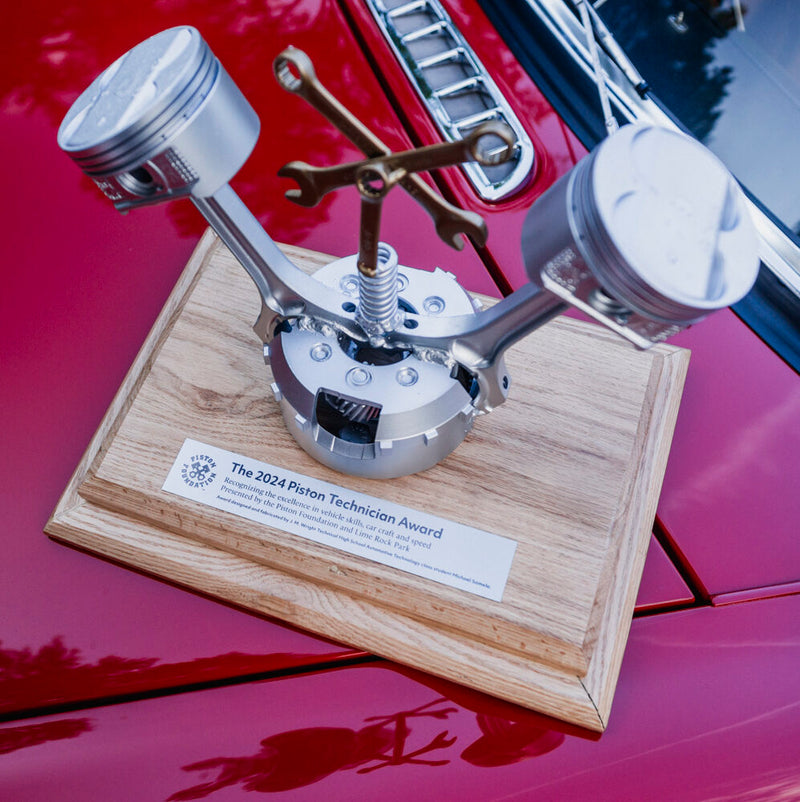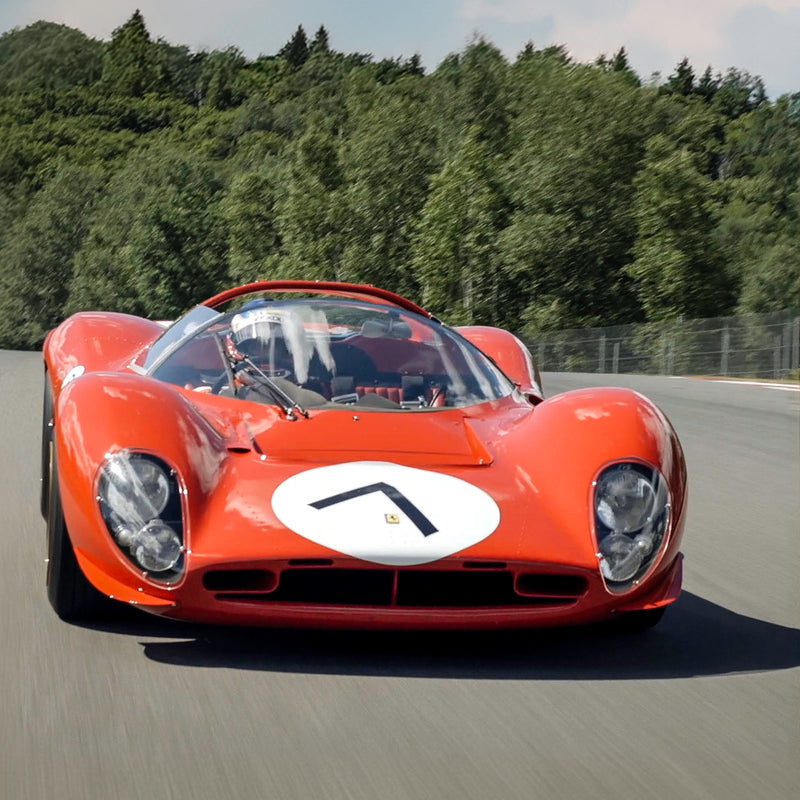GM says that the mid-engine Corvette C8 shares only one part with the C7 generation that it’s replacing (deliveries of the new car will begin in “early 2020”), but it is still very much a ‘Vette. There’s still a pushrod V8 to move the Euro supercar slayer, there’s still room for two golf bags, and it appears to be the greatest American democratizer of performance driving yet. For less than $60,000, you too can have a dry-sumped mid-engine sports car with an eight-speed dual-clutch gearbox that will go around the Nürburgring quicker than just about anything you’ll pass in traffic, or park next to at Cars & Coffee, where most of these things are sure to driven on weekend number one.







That said, the new car is also a departure from its lineage, and in more regards than just the length of the driveshaft (Zora Arkus-Duntov, the de-facto father of the Corvette-as-sports-car, had pushed for a mid-engine design since the ‘60s, so the C8’s layout is more like a long time coming than something coming out of left field). There are no more traditional frame rails in the aluminum chassis structure, and as advanced as they’d gotten in the most recent generation Corvettes, there will be no more leaf springs in the C8, which now rides on coil springs and control arms on all four corners.
And while most will celebrate the overall modernization, the new-school transmission (an eight-speed Tremec M1L) isn’t likely to be met with the same enthusiasm: the three-pedal option is no longer an option in the C8. It seems like we should have collectively moved past the amount of milliseconds needed to change gears being the most important measure of a sports car transmission by now, but the C8 will not allow for any fancy footwork in the pedal box—I’ve never met anyone that’s gone on a long rant about the supremacy of paddles that can also heel and toe properly. It’s a trope to complain about this, but it really is a shame.




Perhaps the sub three second 0-60 time will push such concerns right out the rear of your skull though. The base engine—a 6.2L aluminum block with 16-valve aluminum heads and an 11.5:1 compression in a design that’s very similar to the LT1 but is called the LT2 now—is good for 490hp in its lowest trim.



Add the “Performance” (as opposed to what?) exhaust package or the Z51 option though, and that number ticks up to 495 at 6,450rpm, with peak foot-pounds of torque delivered at 5,150rpm rising from 465 to 470. The impressive acceleration stat mentioned above (Car and Driver is reporting 2.8s), requires the Performance exhaust or the Z51 package, implying that they aren’t merely providing slight bumps in engine output—checking the Z51 box also gives you an electronic LSD, larger brake discs, and stickier Michelins.





What about the elements that can’t be reduced to stats though? The styling of the C8 Stingray is a little bit of a slush of modern Chevrolet elements and other mid-engine cars that the Corvette is going to trounce at track days for a third of the price, but overall it’s a very coherent and clean design that looks somehow stout and angular all at once. The snout looks a bit tall from some angles, but that appears to be due to the very short overhang more than anything else; the vast intakes behind the doors are strongly raked and properly puppy-eating mean, but they aren’t a convoluted mess of extraneous sub-vents and geometry that characterize so many other mid-engines these days; the rear end looks like a particularly proud grandma pulled on the Camaro’s cheeks a bit too hard one visit; the rear hatch is pretty par for the course but better off because of it; while the only really bad part, the wheels, are disappointingly part of the modern tradition of super-thin spokes that look like they belong on the walls of tire shops from ten years ago. Enough with the black-and-silver scheme, please!





Underneath the removable (and storable in the rear luggage compartment) targa-style roof panel, the cabin is daubed in smooth leather and suede, and the controls flanking the two-spoke steering square/wheel are decidedly driver-focused to the point where the passenger side is almost like a separate compartment partitioned by the fin of climate controls. The appeal of tactile buttons versus finger tappable icons on a screen is understandable, but this honestly looks poorly designed—the main appeal of traditional climate control systems is being able to use them without really looking, but even if you memorize the endless stack of buttons here you’re always going to have to take your eyes off the road to push the right one. A very weird decision that seems like a contrivance to make that big separator appear necessary. Otherwise, the seats and the rest of the interior space looks properly cool without being overly gung-ho about its intentions to.




Overall, from what we know and have seen so far, the upcoming mid-engine Corvette is a total winner. A new level of bargain performance from the car that wrote the book on it. A car that us Americans can be very proud to call our own. My god, Chevy is going to sell so many hats and polo shirts with this thing.

Photos courtesy ofChevrolet




















































